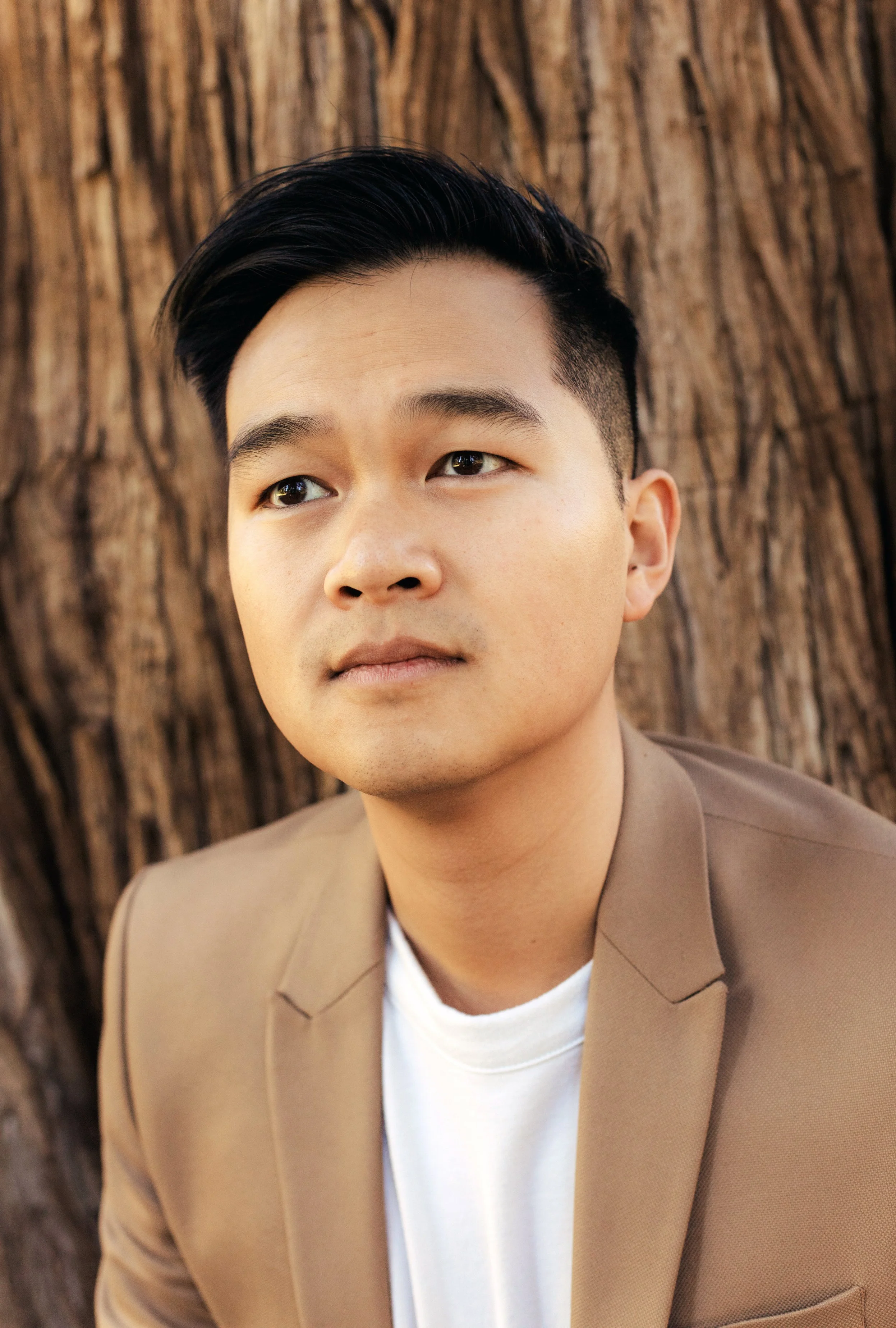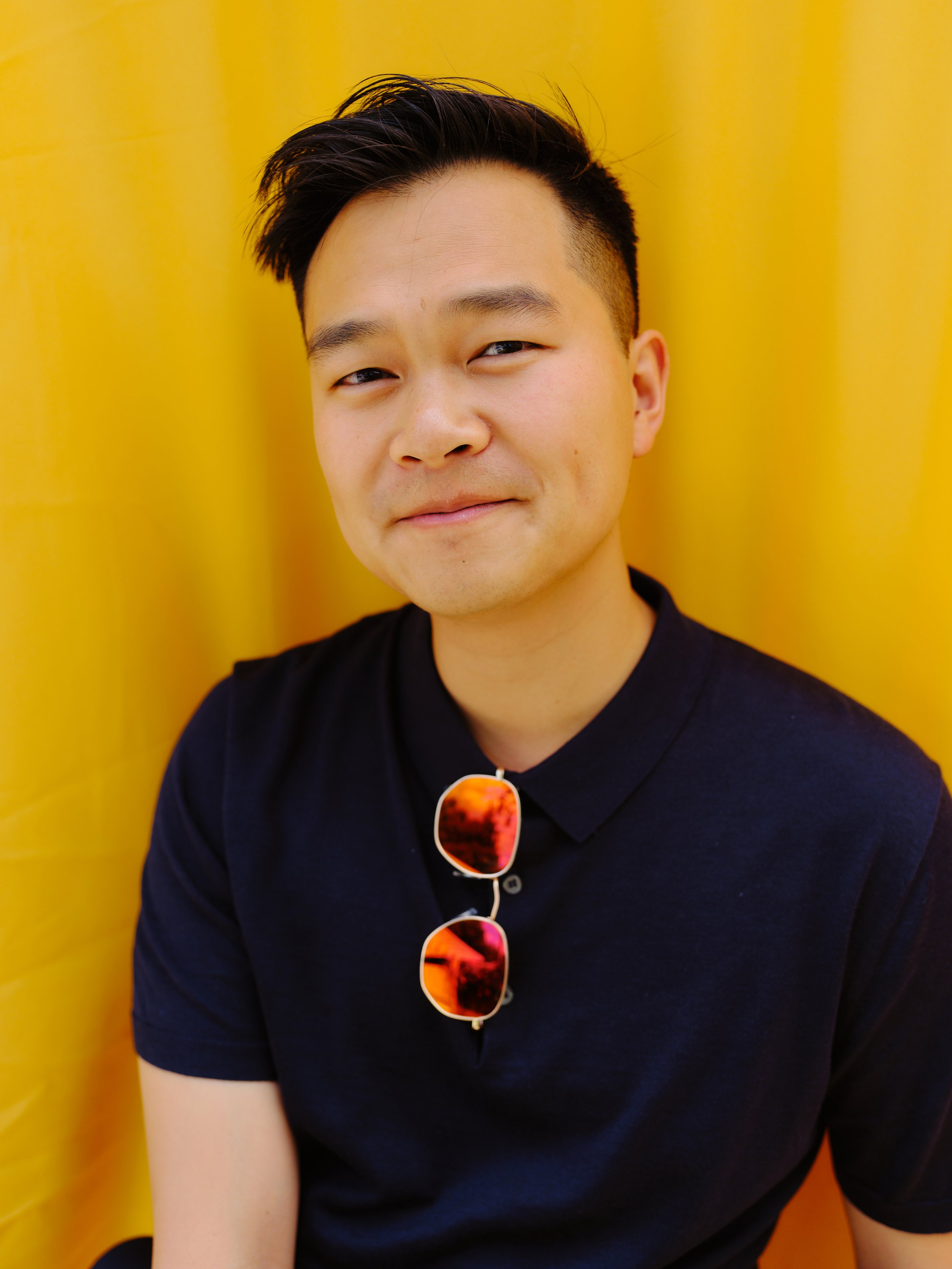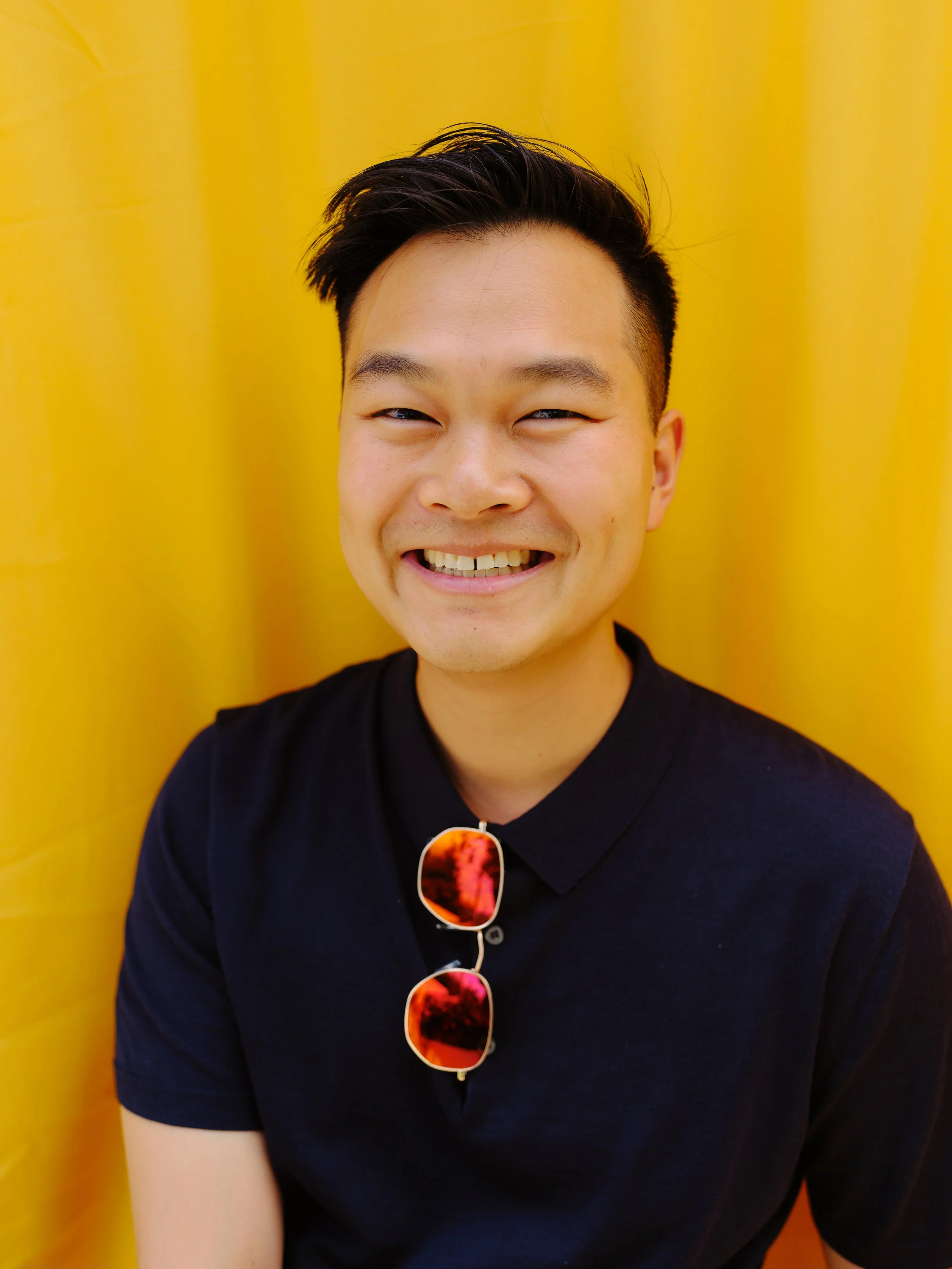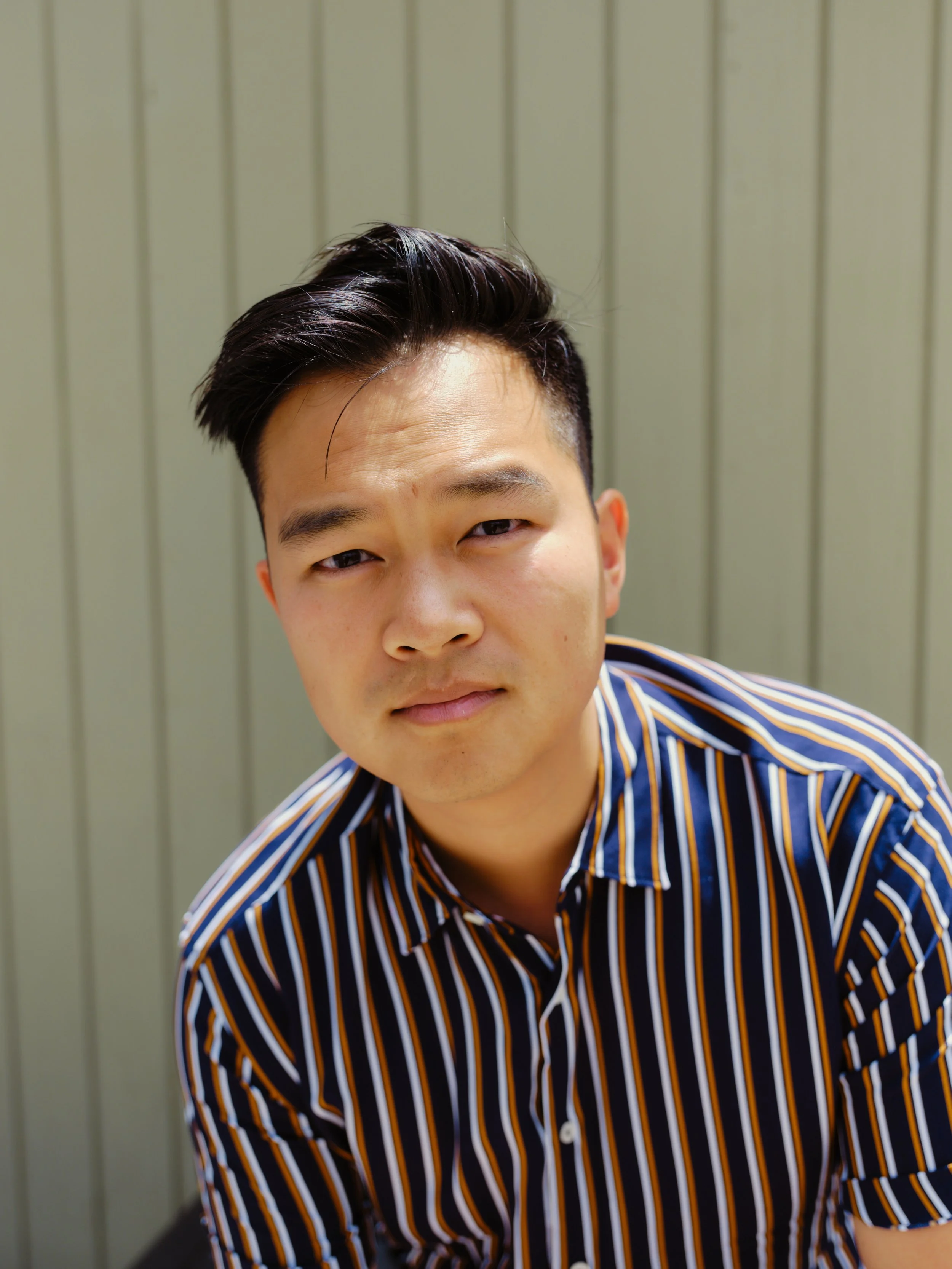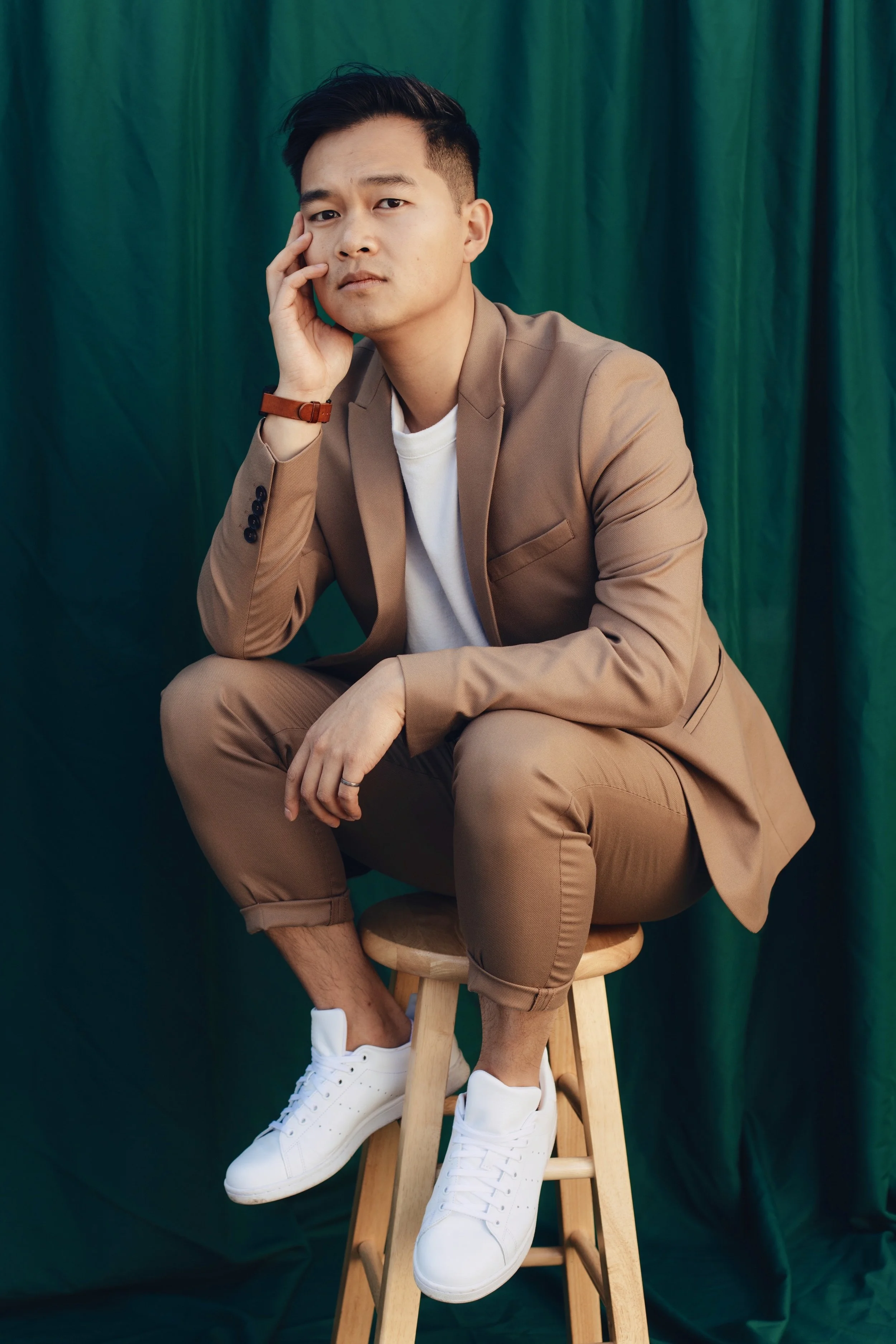Jonny Sun: On Exploding Small Things into Big Ideas and Exploring Feelings
You settle into bed after a busy day, the kind of busy where you don’t really remember how it started. The kind of day where back-to-back events, dinners, meetings, hangouts, and work keep you moving. Before you know it, it’s 10 PM and you feel a spiral of something because you haven’t had a minute alone with your thoughts. You close your eyes, but all you can think about is your heart racing. You lay down, but your body and mind are restless, almost buzzing. After a day in motion, this moment of stillness feels foreign. Your hands want to do something.
Maybe you flip to a random chapter in Jonny Sun’s most recent book, Goodbye, Again, or you stumble upon his Instagram posts. You find yourself thumbing through his sketches and sentences. Your rapidly multiplying thoughts slow as you gaze at his drawings of small plants. Your heart rate settles as you read about his late-night obsessions with pillows. The tension lining your shoulders and jaw–tension you weren’t even aware of–melts as you peacefully picture a tree outside of his therapist’s office. You enter some sort of space where your thoughts are less tiresome. Your emotions, whether that’s the anxiety you have before leaving the house or the comfort an approaching deadline gives you, feel less isolating. Because Jonny is right there feeling those same things with you. Somehow his words, whether they are about a symbolic bucket of popcorn or the fleeting nature of every feeling, calm you. Somehow reading about the adventures of Jomny the aliebn from Jonny’s graphic novel feels safe. Maybe the best way to encapsulate what I’m describing is that after reading Jonny’s writing, you feel soothed.
On a Monday morning over Zoom, Jonny explains that he finds the calming effect of his writing to be surprising. His hair is swished up, and he wears a blue collared shirt that vaguely resembles his recent tweet about Frog’s outfit (from Frog and Toad). He’s back home in Canada, visiting family after having just wrapped up some work in a writers’ room in LA.
“There is a fundamental emotional kind of peace that I experience through writing that I can't experience any other way. I follow that kind of feeling, and I didn’t realize that it shows in my work.”
He discovered that fundamental emotion quite early on when his mother enrolled him in art class. Slipping into nostalgia, he describes his first art classroom as “a mad scientist’s kind of space” with “animal bones, those weird busts of sculptures, 3D shapes, and all sorts of things.” But what kept him coming back to class wasn’t the trinkets. It was the peace of representational drawing: recreating what you see in front of you onto a page.
“You lay out the proportions and then you get the lines right, and then you get the shading right. It was very systematic. And it was really good for me as a young artist to learn that the making of creative stuff has a pattern or a code that is just as strong or more robust than science and STEM.”
Soon after, he began to write stories to accompany the illustrations from art class. One of his first short stories followed a little kid transporting themself into a world where every object and being was a primitive shape. The little kid then had to make friends with a bunch of shapes in order to return home from this alternate universe.
As he narrates the story, Jonny laughs, either at or with (I can’t tell), his younger self. His story of escaping a foreign shape world reminds me of aliebns going to a different planet in his graphic novel everyone’s a aliebn when ur a aliebn too and his personal reflections on change in Goodbye, Again. When I mention that there seems to be a common trend of movement in his writing, Jonny’s laughter disappears into a pensive gaze.
“I never thought about that. But I think there’s always this feeling of displacement, just like that loneliness, or if that’s too strong, just sort of feeling a little bit like an outsider.”
I wonder if the displacement stems from exploring technical and artistic fields that many would consider opposites. When I ask if my hypothesis is true, Jonny shakes his head before delving into his high school experience. He took what he jokingly called the “Asian six-pack,” a combination of three math and three science classes throughout his four years. At the same time, he was heavily involved in theater and playwriting. The untraditional combination of STEM and arts felt, and still feels, quite natural to him. “When I write plays, I think about it in terms of this is a problem that I'm trying to solve. There are all these variables. The rush I feel when I figure out what I am trying to write is almost the exact same rush I feel when I solve a math problem.”
By his senior year of high school, Jonny was choosing between theater and engineering college programs. His theater teacher swayed his final decision. “She had been in the arts her whole life as a working director and writer and performer. I expected her to say, ‘Follow your Hollywood dreams and do theater school.’ Instead, she was real and honest. She said, ‘Try and see if you can live your life without needing to make stuff. If you try it and you're happy, then that’s great because it means that you have other paths available. But if you realize you still want to write plays and perform, then there's your answer.’”
Her advice took the pressure off of Jonny’s decision. “I was thinking that if I choose engineering, I'm never gonna be a creative person. If I choose theater school, I'm never gonna work in STEM. But you choose what you want and the stuff you like will still find you. It’s almost like you can try to shape it, but there are more forces at play. ”
When he went to study engineering at the University of Toronto, those forces manifested in a group of engineers who put on an annual comedy show. While working through his technical courses, he found himself writing sketches, directing, and creating with these students. “I had felt quite alone in wanting to pursue both engineering and creative stuff. But then I joined a whole community of people who were obsessed with putting on the show, not just performers but writers, technical directors, backstage and onstage crew.” He says this with a warm smile, and for a moment, it feels like he has forgotten the displacement that he is so drawn to in his writing.
Post-undergrad, Jonny pursued a master's degree in architecture from Yale before studying social media and virtual places as a creative researcher at the Harvard metaLAB (a knowledge-design lab exploring digital arts and humanities). Since he was researching abstract theories about artificial intelligence and online communities, he found himself observing the opposite in his free time: the smallest of objects, like plants or power outlets. Over the course of three years, he wrote about these small things until he had a pile of anecdotes detailing everything from the growth pattern of a Pothos to the idea that happiness is like a kitten that visits and leaves as it pleases.
In a roundabout manner, the small things led to him re-discovering his passion for writing about big ideas. “What makes me excited about writing is finding a very small thing and exploding that to something bigger. The idea of happiness is so big and amorphous. You can't really grasp it at all. So then it becomes a problem to solve. How do you write about happiness in a way that feels tangible?”
Jonny traces his enchantment with this question to the late nights spent reading the works of playwrights David Ives and Samuell Beckett with his friend. They would analyze the hilarious and heavy pieces of Ives and Beckett, picking apart their favorite scenes and recreating them in their own sketches, all with the sole intention of having fun. It was during one of these late nights that Jonny wrote his first full-length play. “It started out as a three or four-page sketch that I began writing at 1:30 in the morning when I was procrastinating a problem set. I kept going because I liked the way the characters talked to each other, and it became my first play. No one told me to [write it], it just happened.” He pauses here for a moment. When he speaks next, his voice is steadfast, brimming with conviction.
“That’s when I like writing the most. When I'm just writing to explore a feeling, that feels more genuine rather than whatever I plan or calculate.”
He draws on this unplanned approach in his advice to young creators. “None of the best writers I know went to an MFA or creative arts program. They were all people who said, ‘Oh, I really love this stuff, and I just got really into it.’ Even my friends and I learned by just bouncing stuff off of each other, zooming in on why we liked the things we liked, and trying to do that ourselves. That's how you curate a unique voice and point of view. The more you are a fan of things and figure out why something makes you so excited, and then reverse-engineer that.”
When I point out that his approach is similar to analyzing movies after watching them, Jonny lights up and nods his head jubilantly. He laughs before explaining, “Yeah, it drove my now-wife, when we started dating, crazy because we would watch something and I'd say, ‘When this shot happened, I really liked the fact that they zoomed out instead of zooming in when you thought they were going to zoom in.’ She’d be like, ‘I thought we were just watching a movie.’”
He laughs to himself quietly. His eyes are soft, and his cheeks are slightly pink. “Now we both do it together. It's really fun because she will have all these revelations about character and story, while I look at things from a technical standpoint.”
I’m hungry for more information about Jonny, his ability to exercise his brain in many ways, and his capacity to feel so many of the things I feel. I ask for his advice to his 22-year-old self. He thinks about the question, in a similar manner to the way he has been thinking about every question in the past hour: head tilted to the left, chin up, eyes staring at something or nothing on the ceiling that I really wish I could see. He drags out his first few words, maybe intentionally building the tension as one is probably taught to do while working in the writer’s room for BoJack Horseman, before saying:
“I think….”
I lean forward in anticipation, eyes wide. He notices, smiling as if he has an inside joke with himself.
“Well, the instinctual answer is…”
I explode for a brief second, encouraging him to say what comes to the top of his mind. He almost giggles at my excitement. I expect him to drop pivotal literary advice, something that I’ll think about whenever I write. Instead, his words resound with a shyness that’s new to our conversation.
“The immediate answer would be: that girl you're in love with, well, you're still gonna be in love with her.”
My jaw drops. He nods his head, smirking because his answer had shattered my expectations. He further explains, “My now-wife and I started dating in college, and we’ve been together since. We did long distance for a while and stayed together the whole time. That would be the first thing to tell myself, that yeah, that's real. Don't feel silly for feeling how much you feel.”
His last sentence holds a faith strong enough to feel through the screen.
His answer for his career follows the same theme of certainty about his feelings. “I’d tell myself, ‘You think that going into architecture school will help you find that feeling of satisfaction, or that you're still looking for it? But you've already found it.’ Now that I'm working in TV and more intensely creative fields, I’ve realized that the feeling that I get when I write with other writers in a writers’ room is the same feeling I got when I put on that student's sketch comedy show in college. Being in theater, working with the crew, being on set, it’s all the same feeling. I had already found what I wanted. So I would tell myself, ‘Don't keep looking.’” He looks me straight in the eye for that last part.
After spending the last hour analyzing Jonny’s childhood, high school, and college experiences, we return to the present: Who is Jonny right now? What does he like most? What brings him the most happiness currently?
“Honestly, I'm letting myself rest a little more. I’ve always had this compulsion to constantly make stuff and focus any free time on working.”
He pauses for a moment before grinning to say, “That’s probably from school and living under capitalism in general.” We laugh again, this time with a bit of discomfort, about our shared understanding of the productivity-obsessed world we live in. “I'm trying to balance all these things that I constantly have to be. But I want to just let myself exist. I don't like the hack of thinking rest is productive because it just plays into productivity. I'm trying to move beyond that. To rest, write my own things at my pace until another [writers’] room starts or until another thing pulls me in.”
As a recent college graduate who is trying to balance a full-time job and an urge to write, his words pull me in. I respond with my own experience of the awkwardness of building new friendships, the constant confusion about how to navigate the freshman year of adulthood, and the pressure I feel to write even when my eyes hurt from staring at the screen. Jonny relates immediately. His eyes are wide with empathy, his tone earnest and warm.
“We are all trapped under this productivity machine. We are all facing it. But what’s bringing me happiness, and what could help, is just trying to do nothing for a little while.”
Though he is just a head on my computer screen, a comfort washes over me. It takes me a minute to realize that it’s the same comfort that his audience–myself included–experiences when we read his writing: that he is right here, wherever we are, with us, feeling all of the same things.
STORY MALLIKA CHENNUPATY
PHOTOS ROZETTE RAGO
